I love to visit some of the world’s best known cities like New York City, Paris, or Madrid, where I arrived on Friday after ending the five weeks of walking the Camino de Santiago.
Readers who follow my 107-day trip may remember that I have already visited New York City and Paris recently. But somewhat surprisingly for a city lover, the first sights that I normally visit are the parks.
I can’t recall when I visited NYC for the last time without going to Central Park. I shared a video of my latest visit to Central Park in my newsletter of May 27.
Three weeks later, I was in Paris. I made only a short reference to that stop in a Buy-me-a-Coffee post to supporters. Since I was on my way to start the Camino, I never got to post more about that visit. But, like in New York City, I looked for nature again and went to the Bois de Boulogne. And there, to my utter surprise, I saw what looked like a beaver.
But I was wrong. It was a coypu. Beavers and coypus are both semi-aquatic animals with a similar appearance, but there are significant differences between the two species. A coypu (Myocastor coypus), also known as the nutria, is a large, herbivorous, semi-aquatic rodent. It is an invasive species that’s originally native to subtropical and temperate South America.
The easiest way to differentiate the species is by looking at their tail. The tail of a coypu is round, pointed and with little hair, while a beaver has a flattened tail. Here is a picture of my fake beaver in the Bois de Boulogne:
I took it with my phone from quite a large distance, so the photo is not of price-winning quality, but I thought you might find this ‘discovery’ (I know, it’s not) fascinating.
I like this picture better, I took it at about the same spot in the Bois de Boulogne.
All this was just an introduction to say that I didn’t change my city-nature routine in Madrid. About the first thing I visited after arriving was the beautiful Retiro Park; the “Parque del Buen Retiro”, the “Park of the Pleasant Retreat”. And indeed it was pleasant to escape from the summer heat to this green heart of Madrid.
The Buen Retiro was once the center of Habsburg court life when Spain was the foremost power in the world. It was also the scene for magnificent plays that were performed in the park for the royal family and the court during the reigns of Philip IV and Charles II. In the late 19th century, the Retiro became a public park, which has also been used as a venue for various international exhibitions.
I will share some photos, but first a brief reminder that you can subscribe and support this newsletter by clicking on this link:
Or perhaps you would like to buy me a coffee? (Or ice-cream?) via this link.


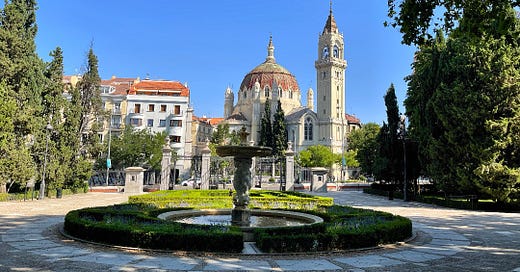







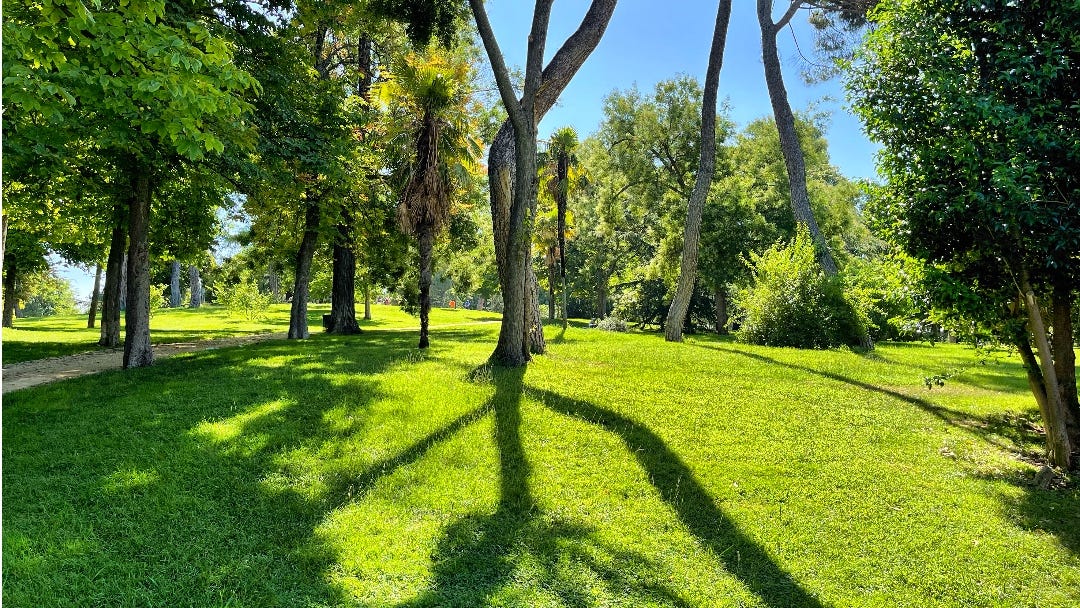
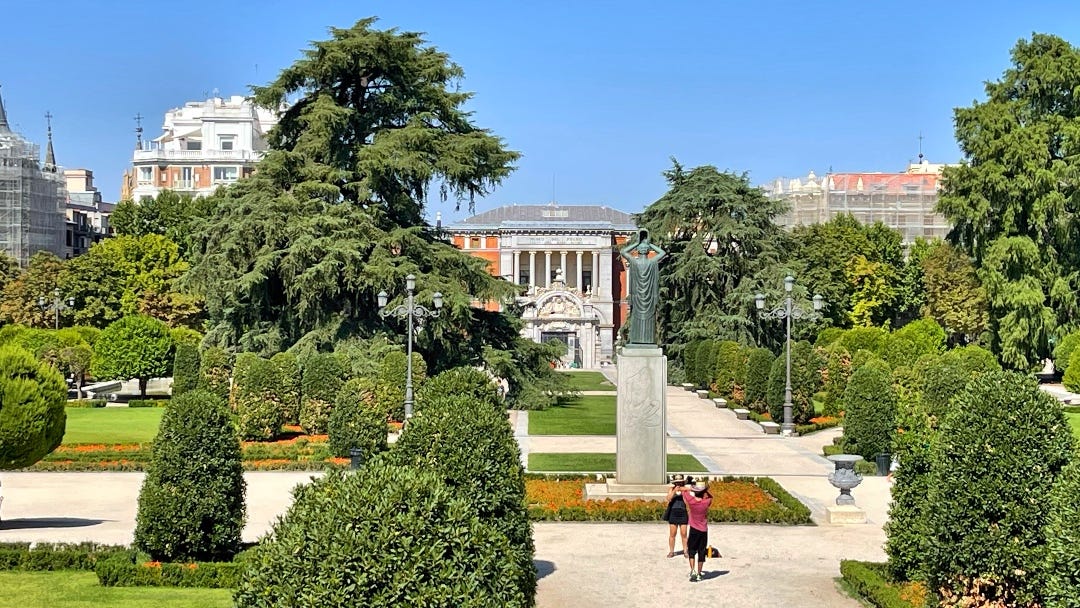
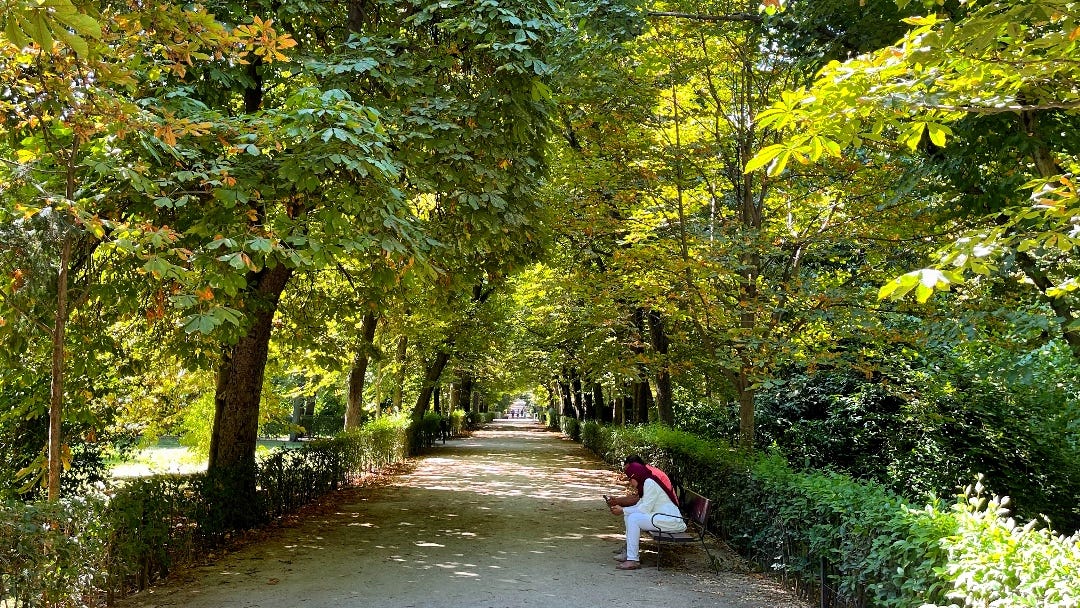
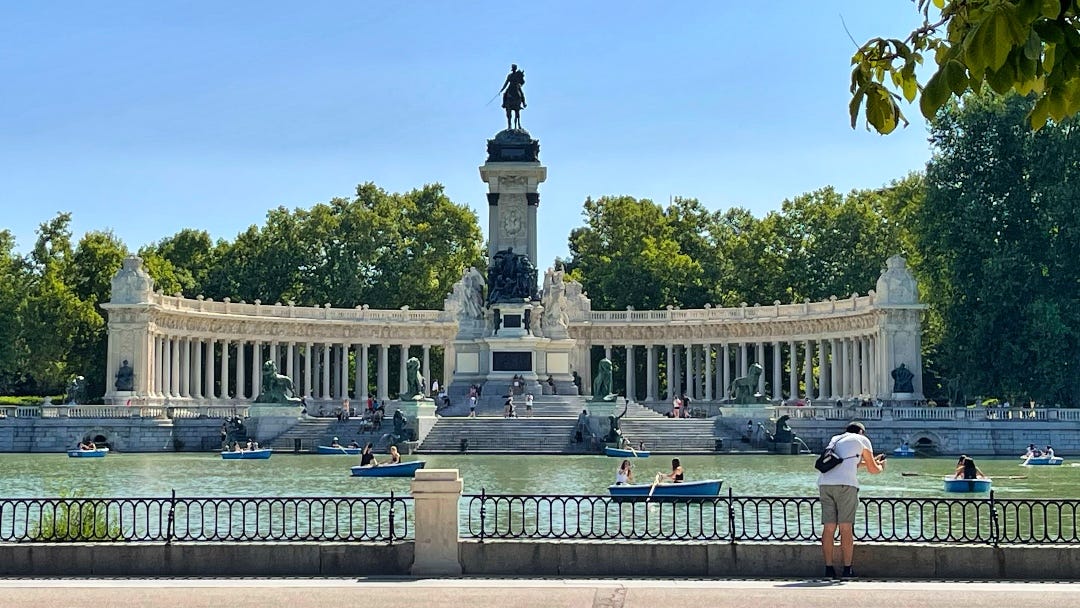
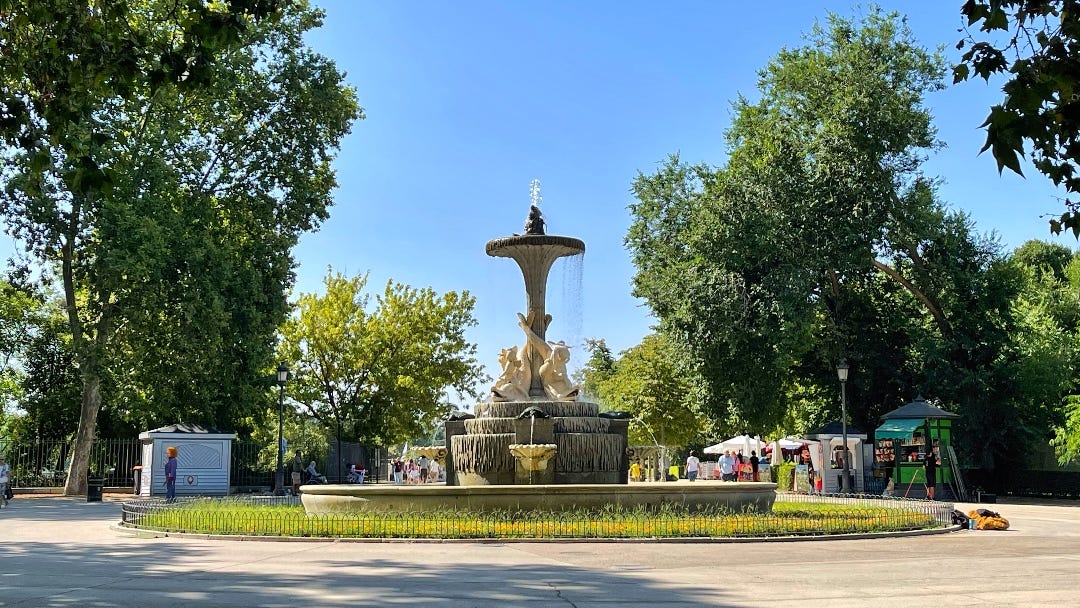


Alex, this is a lovely way to slowly acclimate to the busy world after your pilgrimage. The care and dedication of parks, green areas and rivers/water features are so revealing of a city and it’s people.
I also love city parks and beavers. Thanks for sharing these impressions and thoughts.
When I was in New Orleans they told us to ask for Nutria at the restaurants and they didn't put them on the menu, because it was a delicacy for those in the know - don't think anybody believed them though.
When I read Habsburg court life my mind immediately went to the House of Habsburg and a town called Habsburg just a few miles from here. I'm gonna walk up to that castle tomorrow. It's on the very next stage of the long-distance walk I'm doing. Looked it up and guess what?! "The house [of Habsburg] takes its name from Habsburg Castle, a fortress built in the 1020s in present-day Switzerland". That's the castle! Now I'm wondering if they really properly mad it to Spain and if that's the same "Habsburg". Interesting either way.